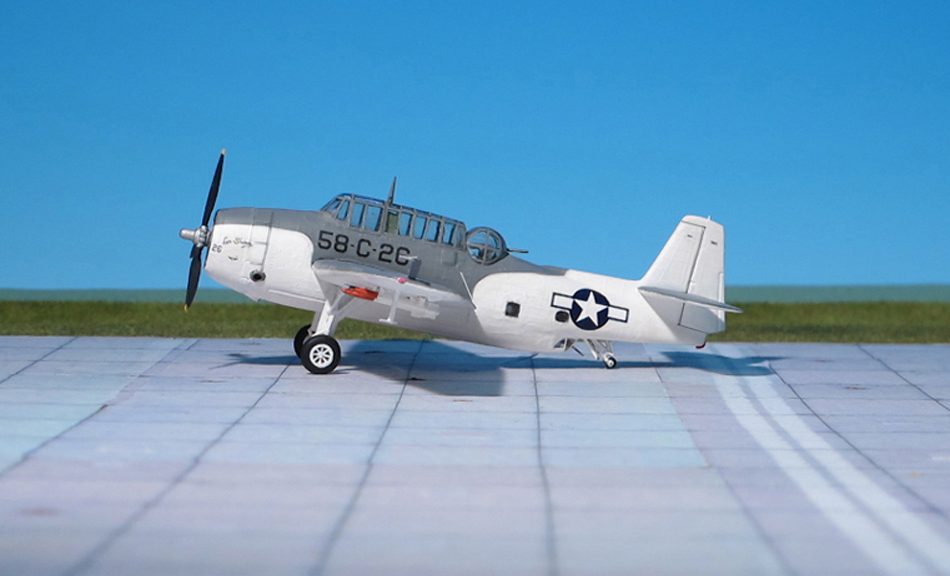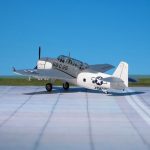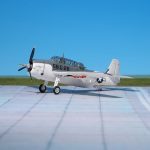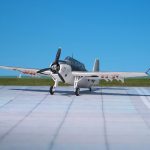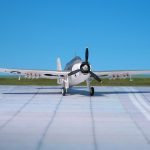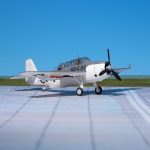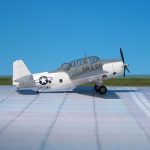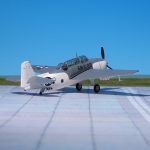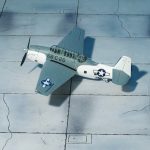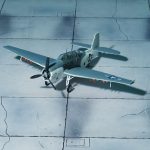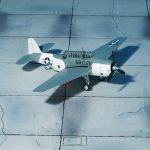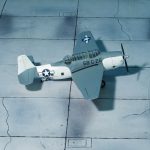TYPE: Carrier-borne torpedo bomber
ACCOMMODATION: Crew of three
POWER PLANT: One Wright R-2600-20 Cyclone radial engine, rated at 1,900 hp
PERFORMANCE: 275 mph
COMMENT: The Grumman TBF “Avenger” was an American torpedo bomber developed initially for the United States Nay and the Marine Corps. The “Avenger” entered U.S. service in 1942, and first saw action during the Battle of Midway. Despite the loss of five of the six “Avengers” on its combat debut, it survived in service to become one of the outstanding torpedo bombers of World War II. The Douglas TBD “Devastator”, the U.S. Navy’s main torpedo bomber introduced in 1935, was obsolete by 1939. Bids were accepted from several companies, but Grumman’s TBF design was selected as the replacement for the TBD and in April 1940 two prototypes were ordered by the Navy. The first prototype was called the XTBF-1. It was first flown on 7 August 1941. Although one of the first two prototypes crashed near, rapid production continued. The TBF-1 “Avenger” was the heaviest single-engined aircraft of World War II, and only the USAAF’s P-47 “Thunderbolt” came close to equalling it in maximum loaded weight among all single-engined fighters, being only some 181 kg lighter than the TBF, by the end of World War II. The Avenger was the first design to feature a new “compound angle” wing-folding mechanism created by Grumman, intended to maximize storage space on an aircraft carrier; the Grumman F4F-4 “Wildcat” and later variants received a similar folding wing and the Grumman F6F “Hellcat” employed this mechanism as well. There were three crew members: pilot, turret gunner and radioman/bombardier/ventral gunner. In total, 9,839 Avengers and including special-purpose versions are built, such as TBF-1C for reconnaissance, TBF-1E with radar, TBF-1J for bad-weather flying, TBF-1L with searchlight in the bomb-bay and post-war development TBM-3W with APS-20 radar in a large ventral radome. Many “Avengers” saw action with other national air and naval aviation services around the world. (Ref.: 23, 24).
